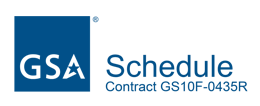Starting Meetings Masterfully – Part I
By Michael Wilkinson, Managing Director, Leadership Strategies, Inc.
Adapted from The Secrets to Masterful Meetings
What is the most important thing to do in starting a meeting?
- Go over the ground rules for the meeting? We think not.
- Introduce people if they don’t know each other? Important, but not first.
- Review the agenda? A very common error.
Consider this: at the beginning of a meeting, people typically want to know two things.
- Why am I here?
- Why should I care?
Through our courses, Masterful Meetings and The Effective Facilitator, we teach the importance of answering these two questions first, before diving into other areas. To help ensure that the two questions are answered well, we use the abbreviations I.E.E.I. as a reminder of the things to include in your opening to start a meeting.
| Inform | Let the participants know the purpose of the meeting and the product to be produced. |
| Excite | Explain the benefits of the meeting and why this meeting should be important to them. |
| Empower | Describe the role they will play or the authority that has been given to them. |
| Involve | Get them involved immediately through an engagement question that furthers the meeting purpose. |
Unfortunately, meeting leaders often start meetings by reviewing the agenda-if they have one-and diving straight into the first agenda item. As a result, participants often aren’t sure of the purpose of the meeting, the products to be produced, why the meeting is beneficial, or why the meeting should be important to them. In essence, meetings often begin with an ineffective start that can negatively affect the rest of the meeting.
We believe an effective start includes the following elements.
Checklist for Starting
*Recommended for all meetings |
The start can take as little as five minutes and as long as forty-five minutes or more depending on the size of the group, the length of the meeting, and the steps you use. You should adjust the list as appropriate for the meetings you lead. Those items asterisked (*) should be done to start every meeting, regardless of number of participants or importance.
A previous article covered starting the meeting on time. This article will focus on your opening words – IEEI.
Inform
We recommend that meeting leaders and facilitators use words like the following at the beginning of meetings.
“The purpose of this meeting is…When we are done, we will walk away with…”
What a great way to start a meeting! These words inform everyone of why we are here (purpose) and what we will have when we are done (product). These words help get everyone on the same page.
Tip for ManagersIf someone asks you to attend a meeting, consider asking that person the purpose/product questions:
The answers can certainly help you avoid unorganized, unfocused, and unproductive meetings! |
Excite
The excite segment is the part of IEEI that is most often overlooked by meeting leaders. The goal of the excite segment is to answer the question, “Why should I care?” Without the excite, you may have people in the room, but are they really at the table?
How do you excite? You excite by making statements that answer the question for them, “What’s in it for me?” Compare these two sample openings. Which one does the better job of exciting?
Excite Sample I
|
Excite Sample II
|
Which is the better excite statement?
- We agree that the second sample is by far the better excite statement.
But why is that?
- Once more, we agree that it does a better job of describing the benefits to the person.
But did you notice one other thing?
- Count the number of times the words “you” or “your” show up in the excite statements.
A key secret to getting people excited about participating in a meeting is to explain what is in it for them. And you can help ensure you do this well by including the words “you” or “your” at least four times in the excite portion of the IEEI.
Empower
The goal in empowering participants is to ensure that they are clear on the power they have while in the meeting. When people feel empowered, they tend to be less hesitant to participate in discussion and more willing to offer their thoughts and ideas.
Below are three samples of empowering. Often a single, focused, empowering statement is adequate. Other times you may find that multiple statements are needed to empower a group that is used to being told what to do.
Empower Examples
|
Involve
After delivering the opening, consider getting the participants immediately involved. Why? The involvement step engages everyone quickly and prepares them for the rest of the meeting.
How do you involve participants early in a meeting? For some teams, it is best to start with a question that is focused on the task at hand. For other teams, it may be more appropriate to start with a question that takes more of a people-focus. Consider the following samples.
Involve Examples
|
In summary, use the IEEI approach to provide highly effective openings that inform, excite, empower and involve. Interested in learning more facilitation techniques? Check out our course, The Effective Facilitator.
About the Author
Michael Wilkinson is the Managing Director of Leadership Strategies – The Facilitation Company, and a much sought after trainer, facilitator and speaker. He is a Certified Master Facilitator and a Certified Professional Facilitator. As a past president of the Southeast Association of Facilitators and a board member of the National Institute of Facilitation, Michael is a national leader in the facilitation industry. You can get more tips from either of Michael’s books, The Secrets of Facilitation or The Secrets to Masterful Meetings. You can receive a signed copy through our website.

